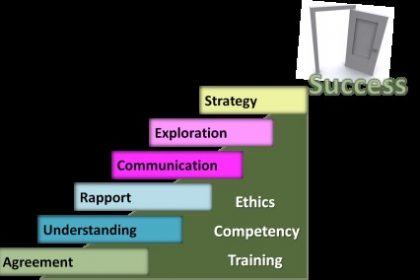by Ruth Pearce

This book addresses how the role of the project manager is perceived, an analysis of project manager strengths and the implications plus application, building engagement, influence, appreciation, social intelligence, communication, and motivation.
The chapters of the book include:
Introduction
- What is a Project Manager?
- How Engagement and Motivation Make Things Happen!
- What is Strengths-Based Project Management?
- Who are you – my reader?
CHAPTER 1
- Project Managers – More Than Just Plate Spinners and Ball Jugglers
- Implementing the Platinum Rule – Treating People as They Want to be Treated
- What You Can Do to Put Your Projects in the Successful Category
- The Magic of Engagement
- Project Manager Character Strengths
CHAPTER 2
- Seeing is Believing: The Maggie Method
Chapter 3
- Influence – the Project Motivator’s Best Friend
- Authority or Influence – Where is the Power?
- Building Your Ripple
- On Your Mark, Get Set, Grow
- Be Creative and Persevere – Working in a Failure Intolerant Environment
- The Link to Creativity and Engagement
- What we Appreciate Appreciates!
Chapter 4
- Building a Culture of Appreciation
- The Heart of Engagement – Appreciation
- Building Appreciation
- Understanding Character Strengths
- Building Your Strengths
Chapter 5
- Building a Culture of Appreciation for Our Stakeholders and Teams
- Project Management and Leadership
- Next Steps with Character Strengths – The Story Continues
- Introducing Character Strengths to the Team
- Building Strengths Awareness in the Team
- Taking Strengths to Your Team
Chapter 6
- When Strengths Go Wrong
- Social Intelligence – the Elusive Project Motivator Strength
- Platinum Rule Revisited – Strengths Overuse & Underuse by Individuals
- Learning to Spot Strengths Overuse – And to Fix It
- Exploring the Team’s Heart and Mind Through Character Strengths
- When Strengths Collide – in the Individual
- When Strengths Collide – in the Team
Chapter 7
- When Other Things Go Wrong
- “A goal without a plan is just a wish” – How to Plan with Mixed Styles
- Building a Multi-faceted Communication Plan
- Learning Styles – “It is not the Notes I Take… It is the Taking of the Notes”
- The Foundation of Conflict Avoidance – Communication as Connection
Chapter 8
- Completing the Circle – To Be a Project Motivator
- Be Hopeful
- Be Strong
- Be Brave by Being Vulnerable – Building Influence and Trust
- Be Curious
- Motivate!
Chapter 9
- Creating the Implementation Plan
The Good:
The book is build on research and experience plus includes specific stories or examples. The stories or examples apply the concepts in the real world and keep reading interesting. The analysis of what is happening in the story supports project managers in upgrading their work.
With each chapter a list of learning points is included at the start. At the end are questions for reflection to make the information stick along with strategies for success specific to project managers’ strengths.
At the end is a table for planning your implementation of the information.
The Bad:
It incorporates many levels of awareness and multi-faceted implementation which means that while some will take a key concept or two and be happy with the outcome, to really gain the full benefit calls for a dedicated effort.
Conclusion:
If you are a career project manager, both your impact and your success will be enhanced exponentially with the insight and tips from this book. Invest the time and energy to work through all of it!



